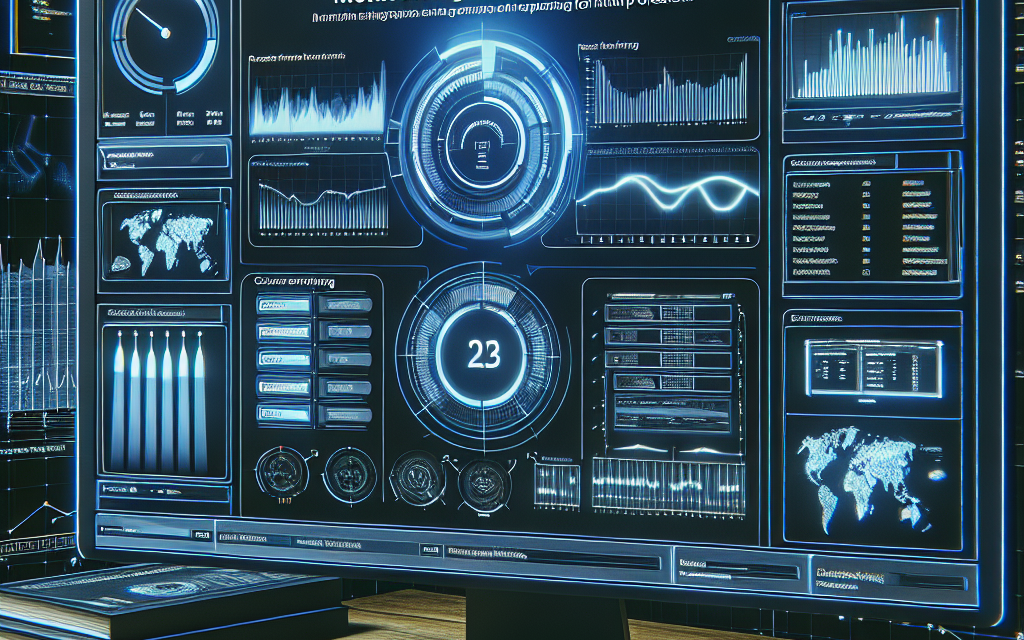In today’s fast-paced digital landscape, ensuring that your Windows Server environment operates smoothly is paramount. Real-time monitoring provides crucial insights into server performance, resource utilization, and potential issues that can disrupt operations. This comprehensive guide will outline the importance of real-time monitoring, the tools available, and best practices to enhance your monitoring efforts in a Windows Server environment.
Why Real-Time Monitoring is Essential
Real-time monitoring allows administrators to proactively identify and resolve issues before they escalate into significant problems. Here are some key benefits:
- Immediate Issue Detection: Instant alerts for hardware failures, service downtimes, or unusual activities enable quick remedial actions.
- Performance Optimization: By continuously tracking CPU, memory, and disk performance, administrators can fine-tune server configurations and resource allocation.
- Enhanced Security: Monitoring system logs and network traffic helps identify security breaches or unauthorized access attempts in real time.
- Informed Decision-Making: Analytics from monitoring tools can guide capacity planning and infrastructure upgrades.
Tools for Real-Time Monitoring in Windows Server
Several built-in and third-party tools are available to provide real-time monitoring capabilities on Windows Server:
1. Windows Performance Monitor (PerfMon)
PerfMon is a powerful built-in utility that allows administrator to track various performance metrics like CPU usage, memory consumption, disk activity, and network statistics.
- How to Use:
- Open
PerfMonby searching in the Start Menu. - Add performance counters for the metrics you want to monitor.
- Set up alerts that trigger based on predefined thresholds.
- Open
2. Task Manager
While not as comprehensive as PerfMon, Task Manager provides a quick overview of system performance and resource consumption.
- How to Access:
- Right-click on the taskbar and select Task Manager.
- Go to the ‘Performance’ tab for real-time performance monitoring.
3. Event Viewer
Event Viewer records system events and logs potential issues that may impact server performance or security.
- How to Use:
- Access it through the Start Menu.
- Navigate to the
Windows Logssection to review Application, Security, and System logs.
4. Resource Monitor
A more detailed view than Task Manager, Resource Monitor shows real-time CPU, memory, disk, and network usage, along with details about processes consuming resources.
5. Third-Party Monitoring Tools
For advanced monitoring capabilities and centralized management, consider third-party solutions such as:
- Nagios: Offers comprehensive monitoring for network and server resources.
- Zabbix: Provides real-time monitoring and metrics collection.
- SolarWinds Server & Application Monitor: A user-friendly tool focusing on server performance.
Best Practices for Real-Time Monitoring
Implementing effective monitoring involves more than just selecting tools. Here are best practices to enhance your monitoring strategy:
1. Define Key Performance Indicators (KPIs)
Identify and define the KPIs that matter most for your environment, such as CPU load, memory usage, disk space, and network latency.
2. Set Up Alerts Wisely
Configure alerts to trigger notifications for certain thresholds but avoid alert fatigue by setting reasonable limits. Ensure that notifications are actionable and routed to the right personnel.
3. Regularly Review and Analyze Data
Utilize collected data to analyze trends over time. Regular reviews can reveal patterns that help you optimize performance and improve reliability.
4. Integrate with Other Tools
Consider integrating your monitoring tools with incident management and ticketing systems. This will streamline issue resolution and ensure that nothing falls through the cracks.
5. Automate Where Possible
Leverage automation for repetitive tasks such as system health checks or basic troubleshooting to save time and reduce human error.
Conclusion
Real-time monitoring plays a significant role in maintaining the health and performance of Windows Server environments. By utilizing built-in tools and embracing advanced third-party solutions, you can ensure that your systems are monitored effectively. Continuous assessment and optimization of your monitoring strategy will lead to a robust and resilient server infrastructure that can meet the ever-increasing demands of your organization.
By following this comprehensive guide, you’ll not only enhance your monitoring capabilities but also improve overall server performance, security, and reliability.





